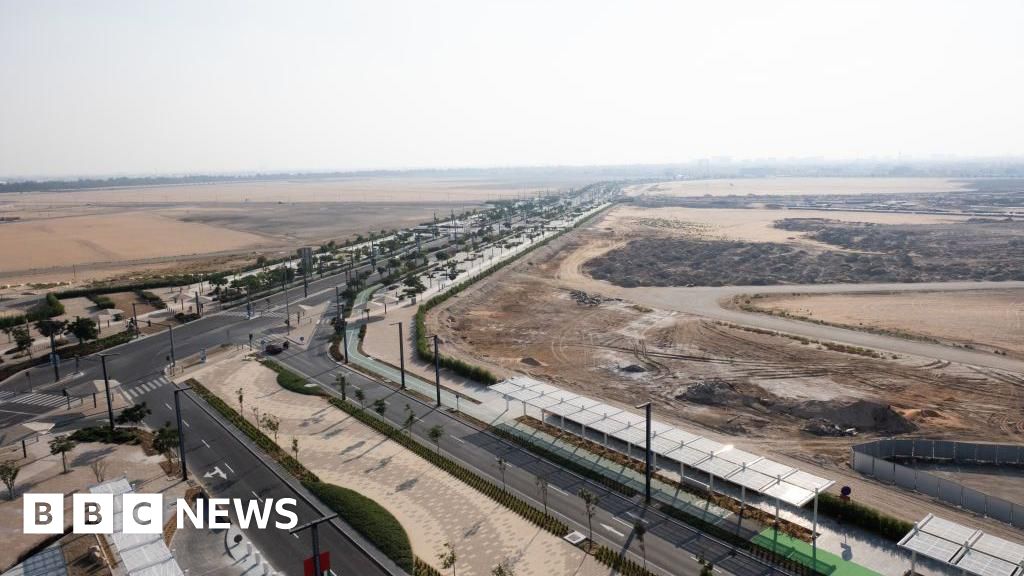
Over 200 people have been killed as deadly flooding struck in Spain over the past few days. (Image: Getty)
Almost 2,000 people are still missing in the wake of deadly flash floods that struck Valencia, bearing the brunt of Spain's worst flooding disaster in generations.
Rescuers are working to free trapped residents as the death toll from the flooding, which began on Tuesday, rose to more than 205 as of Friday evening, with 202 of the bodies being recovered in Valencia.
Two were also recovered in Castilla La Mancha and one in Andalusia. Authorities have warned the death toll is expected to rise.
The Interior Ministry's Integrated Operational Coordination Centre (Cecopi), managing the missing person's database as desperate searches continue, confirmed that 1,900 people remain unaccounted for, according to local media.
They've been inundated with frantic calls from the families and loved ones of people whose whereabouts are still unknown.

Search operations are continuing after catastrophic flooding in Valencia. (Image: Getty)
But there are hopes that the alarming figure will come down in the coming hours as people are found after some 600 people missing people were located on Thursday.
However, Spanish news outlet El Diario reports that around 70 bodies were found today and have yet to be collected. There are fears that more fatalities could be confirmed when the many vehicles stuck on roads are searched.
The Ministry of Health has warned that some hospitals are "on the verge of collapse" amid the huge numbers of people injured, with La Fe Hospital in Valencia the most at risk.
Images from the US Landsat-8 satellite offered a shocking illustration of the scale of the disaster, with observations from 8 October and 30 October showing the dramatic transformation of the landscape, as the deluge wrought devastating flash floods, turning streets into rivers, destroying homes, and sweeping away vehicles.
Thousands of volunteers assist the Spanish military and emergency services with rescue efforts and the clean-up operation.
According to a BBC News report, Valencia's regional president, Carlos Mazon, said more troops would be deployed to assist.
Pedro Sánchez, the President of the government, expressed solidarity with those affected by the disaster, promising that the “absolute priority” is to help those affected “with all the resources of the State and, if necessary, of the European Union."
Spain: Satellite images show extent of Valencia flooding
Invalid email
We use your sign-up to provide content in ways you've consented to and to improve our understanding of you. This may include adverts from us and 3rd parties based on our understanding. You can unsubscribe at any time. Read our Privacy Policy
He also vowed that “all the necessary means" would be put in place "for as long as it takes for us to recover from this tragedy”, assuring citizens that “We are not going to leave you alone”.
However, some have accused authorities of being poorly prepared for the devastating floods and not providing timely warnings.
Valencia resident Hector Bolivar, 65, told Sky News that a text message alert was only sent out at 8pm, with the heavy rain began several hours earlier.
Carlos Mazon, the president of Valencia's regional government, has insisted that all disaster management protocols were followed and that warnings had been issued since Sunday.
Spain’s state weather agency, Aemet, has issued the most severe weather alert in the southwest of the country. The province of Huelva was battered by a torrential downpour and further heavy rain is expected elsewhere.
Those already reeling from the worst of the flash flooding in eastern Spain are also expecting more rain, with yellow and amber weather warnings remaining in place.
A similar deadly flood struck Valencia in October 1957 caused by the same seasonal weather phenomenon known as a Gota Fria or a Cold Drop, killing dozens of people.
This time, scientists believe the warming climate is likely to have contributed to the severity of the floods.
World Weather Attribution (WWA) said in a preliminary report that the rainfall which struck Spain was 12% heavier because of climate change and that the weather event experienced was twice as likely compared to the 1.3C cooler preindustrial climate.
You can find the latest forecasts and weather warnings on the AEMET website.

 3 weeks ago
4
3 weeks ago
4










 English (US) ·
English (US) ·